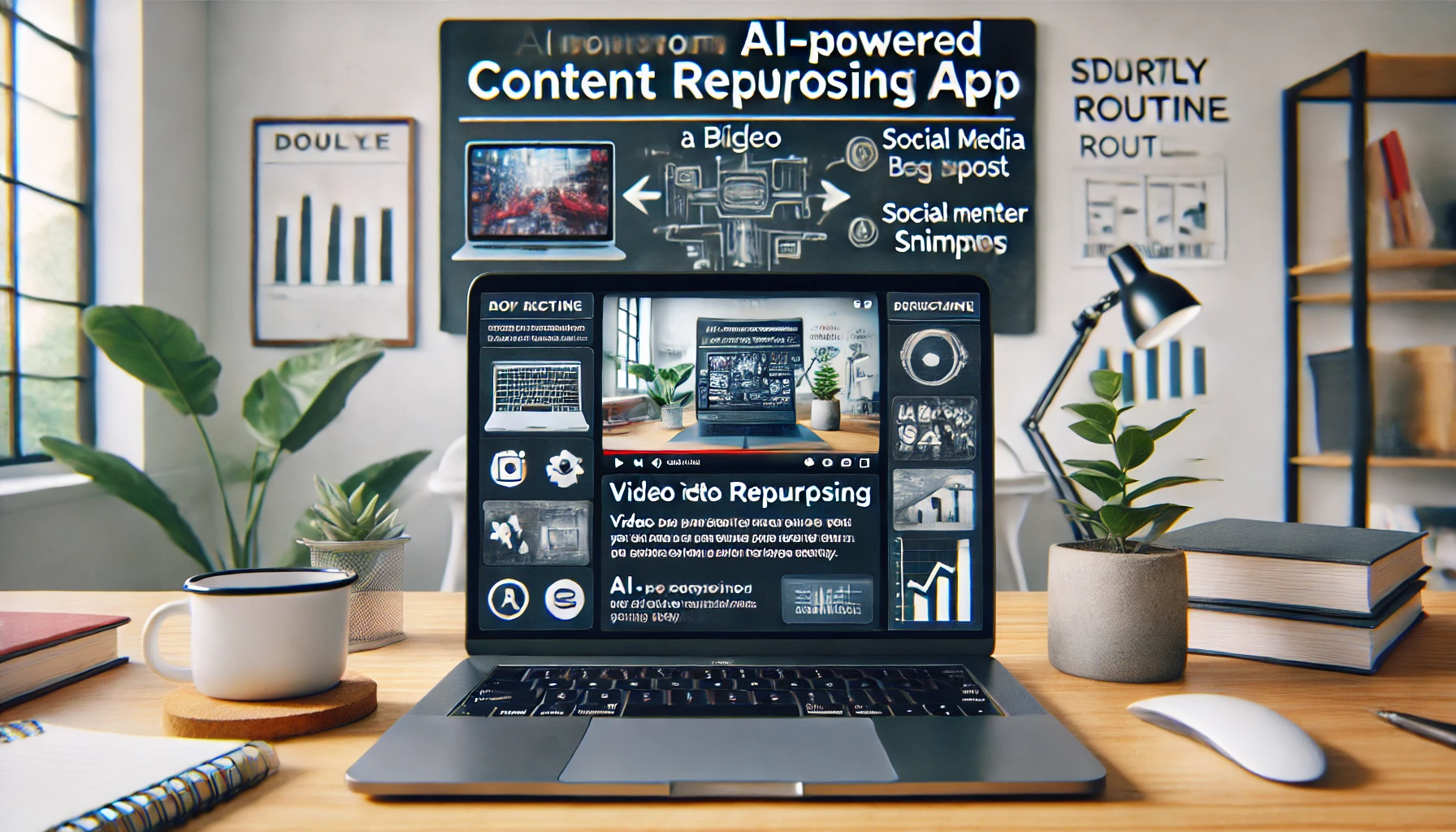
Building Video-Repurpose: My Journey from Idea to MVP
A while ago, I stumbled upon a challenge on X: “Make $1000 with a small project.” It caught my attention, and I decided to take it on. The only problem? I had no idea what to build.
The Spark of an Idea
One day, I was chatting with Claude, and it suggested an idea that instantly resonated with me. The problem was clear:
The Problem:
- Course creators spend hours converting their video content into other formats (blog posts, social posts, newsletters).
- They need this content for marketing and to cater to different learning preferences.
- Manual transcription and reformatting is time-consuming.
The Solution:
A web app that takes a youtube video url and automatically:
- Transcribes the content.
- Generates a well-structured blog post.
- Creates social media snippets.
- Produces a newsletter-ready summary.
I loved the idea and immediately started brainstorming features and designing how the app should function.
Defining the Features
I outlined the core features the app would need:
- Add a YouTube video link.
- Generate transcription.
- Convert transcription into a blog post.
- Create a newsletter summary.
- Generate a tweet thread.
- A dashboard to manage content.
I asked Claude to conduct market research, and I found some major players in the space, along with gaps I could address. However, I didn’t spend much time on product-market fit or extensive research. Instead, I jumped straight into building the MVP—I missed the feeling of working on a project.
Building the MVP
The MVP needed only the essentials:
Essential Features:
- Add YouTube video URL
- Generate transcription
- Create a blog post from video content
- Generate a tweet thread
- Simple dashboard for content management
- Export in Markdown and plain text formats
User Flow:
- Login via google account.
- Main Dashboard:
- Upload button/input field.
- List of previous conversions.
- Display of remaining credits/limits.
- Content Creation:
- Upload video/audio.
- Review & edit.
- Export options (copy to clipboard).
Balancing a Full-Time Job and a Side Project
I work a full-time job from 9 to 5, and finding time to work on this project was tough. To make things worse, I caught a nasty flu that drained all my energy and ruined my routine.
Once I started feeling better, I knew I needed a structured plan to maximize my time. I wrote down my new schedule on a whiteboard:
- 6:00 AM - Wake up
- 6:15 AM - Warm-up
- 6:20 AM - Read
- 6:50 AM - Work on the side project
- 9:00 AM - Job
- 18:00 PM - Workout
- 21:00 PM - Bedtime
I followed this routine strictly for 21 days (supposedly the time it takes to build a new habit). Sticking to this schedule allowed me to complete the MVP.
Tech Stack and Learnings
I chose NestJS, React.js, and MongoDB because they align with my full-time job tech stack. This project was an excellent opportunity to deepen my expertise.
During development, I learned:
- Authentication & Authorization with NestJS.
- Payment integration.
- Containerization with Docker.
- Setting up a VPS with Nginx to run Docker containers.
Now Comes the Hard Part: Marketing
With the MVP finished, I’m now focusing on marketing and getting my first customer. Not so surprisingly, this phase is proving more challenging than development itself! However, I see it as a fantastic opportunity to learn and grow.
Regardless of whether I succeed in the challenge or struggle to gain traction, this journey has already given me far more than just the possibility of making $1000. The real value is in the skills I’ve gained, the discipline I’ve built, and the person I’ve become. And that’s worth much more than any monetary goal.
I’ll update you in my next blog on how the marketing phase goes. Let’s see where this journey takes me!